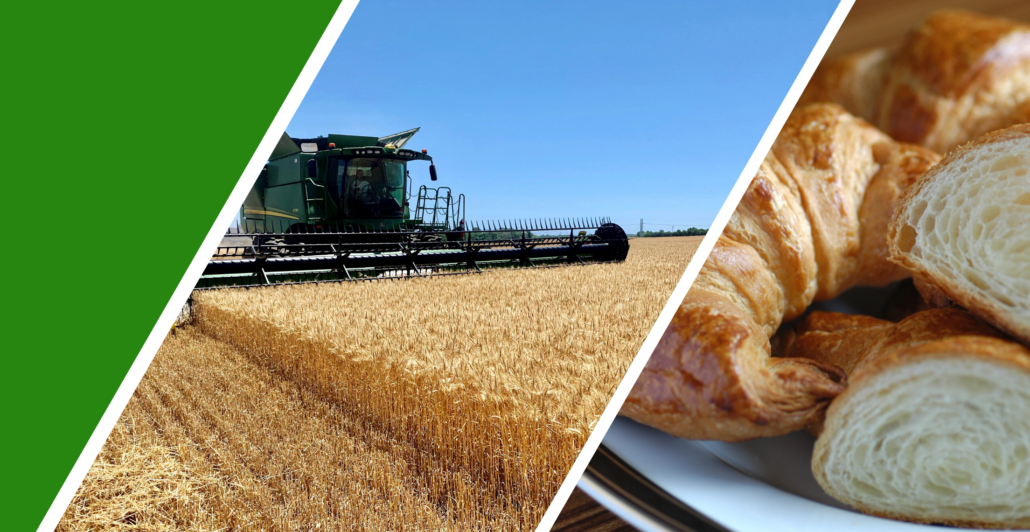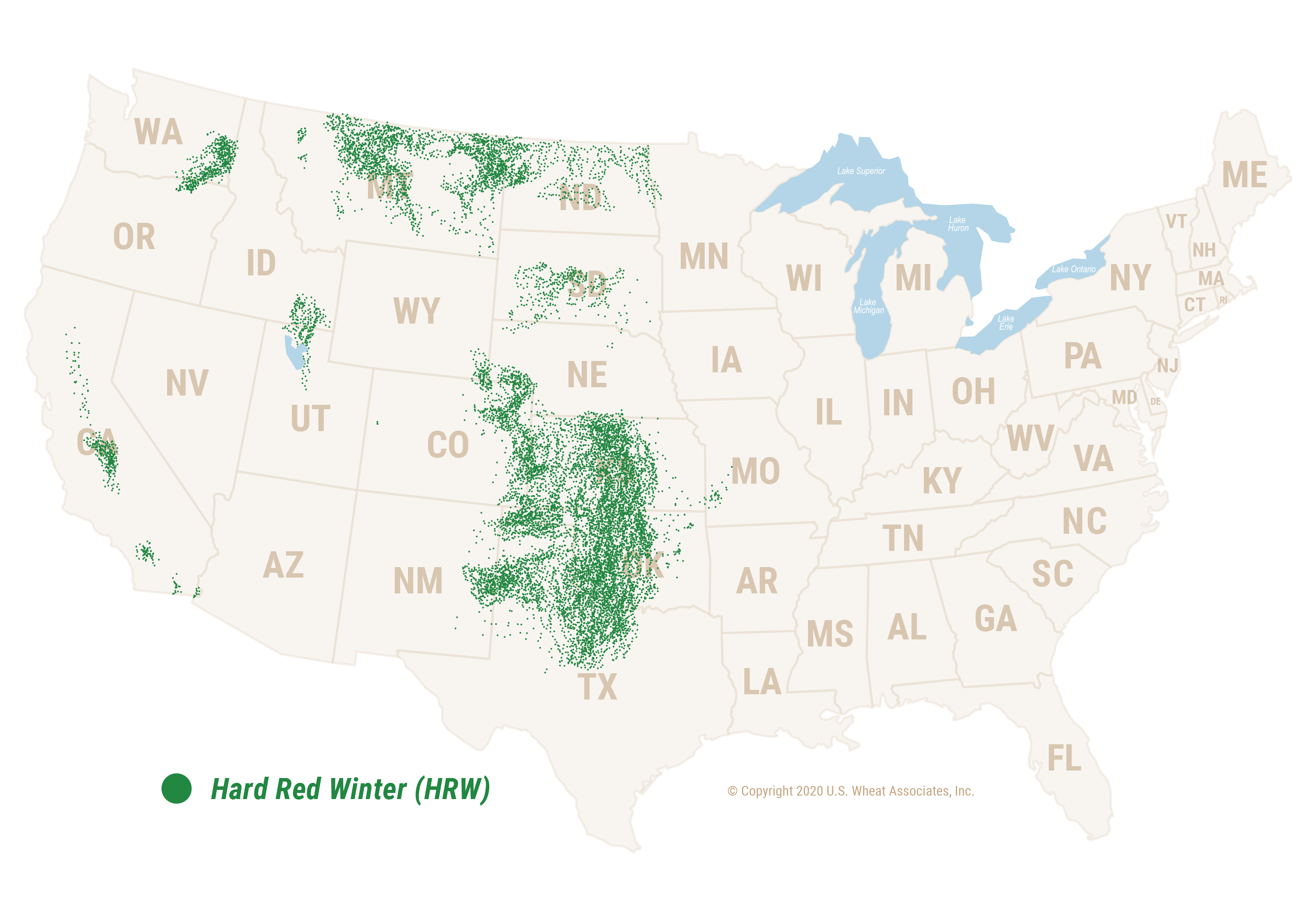With excellent milling and baking characteristics for wheat foods like pan breads, hard rolls, croissants and flat breads, U.S. hard red winter (HRW) is a versatile wheat. It is also an ideal choice for some types of Asian noodles, general purpose flour and as an improver for blending. It has medium to high protein of 10.0% to 13.0% (12% mb), medium hard endosperm, red bran, medium gluten content and mellow gluten.
For the miller, HRW brings consistency to the grist. A balanced mill optimizes flour extraction and helps maximize milling efficiency. Maintaining HRW as the foundation of the mill grist allows the miller to blend other U.S. classes, local wheat or wheat from other origins as cost advantages or product differentiation opportunities develop. For the baker, HRW benefits include improved baking characteristics, including dough stability and water absorption, either alone or as part of a blend. HRW delivers consistency as it is always available and provides the most reliable foundational ingredient for most wheat-based products.
Where is U.S. Hard Red Winter grown?
Grown in the Great Plains, Pacific Northwest (PNW) and California, hard red winter (HRW) is the most widely grown class in the United States. With such a large growing area, conditions can greatly vary among the production regions. HRW wheat can be exported from the Gulf and Pacific ports.



